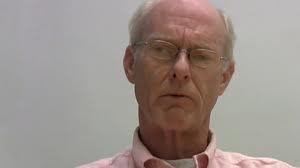- unknown (b.)
Bio/Description
He is an electrical and radio engineer from the United States who developed early prototypes of Internet protocols, file servers, gateways, network interface cards and, along with Robert Metcalfe and others, co-invented Ethernet, the most popular family of technologies for local area computer networks.
David graduated from Princeton University, and as a young graduate worked at Xerox PARC, where he met Robert Metcalfe while the latter was debugging an Interface Message Processor interface for the PARC systems group. Having considerable experience as an amateur radio operator, he recognized similarities between Metcalfe's theories and radio broadcasting technologies and joined his project. According to The Economist, "the two would co-invent Ethernet. He figured out how to build the system." and Metcalfe generated the ideas. In 1973 they built several Ethernet interfaces for the Xerox Alto pioneering personal computer. On March 31, 1975, Xerox filed a patent application listing him along with Metcalfe, , Chuck Thacker and Butler Lampson as inventors. In 1976, after 18 months in the writing, they published "Ethernet: Distributed Packet Switching for Local Computer Networks", Ethernet's seminal paper. It was reprinted in a special 25th anniversary issue of the Communications of the ACM. He produced a slide for a talk at the June 1976 National Computer Conference from a Metcalfe sketch of Ethernet terminology that was widely reproduced. The original prototype circuit is now in the National Museum of American History at the Smithsonian Institution. While at Xerox, he attended graduate school at Stanford University, where he received both a master's degree in 1973 and a Ph.D. degree in 1982 in electrical engineering. His dissertation was "Internet Broadcasting". The concept was extended to IP multicasting by Steve Deering, also at Stanford. He received the IEEE Computer Society technical achievement award in 1988, and is a fellow of the Association for Computing Machinery. He was involved in developing the PARC Universal Packet protocol architecture, which was developed about the same time as TCP/IP. After leaving Xerox, David worked at the Digital Equipment Corporation Western Research Laboratory (DECWRL), on the "Titan" project in the mid 1990s. He joined LAN Media Corporation (LMC) in the late 1990s and, together with his good friend Ron Crane (RIP), designed high speed WAN interface cards for routers and computing equipment. LMC was acquired by SBE Incorporated in July 2000 and then by Neonode in 2007.
David later worked as an engineering consultant for various companies in the Silicon Valley area.
He was one of four recipients of the IEEE Unsung Heroes of Ethernet award in 2013. The other three were Ron Crane (10M b/sec Ethernet card design and IEEE 802.3 standards work), Geoff Thompson (early user of Ethernet and former chair IEEE 802.3 WG) and Tat Lam (Ethernet transceiver design).
-
Gender:
Male -
Noted For:
He developed early prototypes of Internet protocols, file servers, gateways, network interface cards and, along with Robert Metcalfe and others, co-invented Ethernet -
Category of Achievement:
-
More Info:


